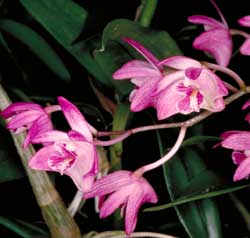It was an interesting Christmas this year – the raspberries were a little bit behind and we did not have very many for Christmas dinner, although the young visitors still managed to find a basin each for themselves! The Christmas lilies managed to splutter open on Boxing Day – about a week later than normal, meaning we missed what is an important element of Christmas for the Head Gardener’s family.
Still, the other important components were there – freshly dug potatoes, oodles of chocolate and champagne, and most of the family members needed to make it a great day.
One of those was the Head Gardener’s brother and his wife – they work and live in Switzerland and had been looking forward to a warm Christmas so they flew in on Christmas Eve. He has a management job with an international seed and agricultural products company. When we had a chance to have a chat about business he casually let drop the information that his company is one of the world’s major suppliers of Poinsettias.
Poinsettias are a common Christmas gift, their bright red leaves (not really leaves but we will come to that soon) seemingly heralding the festive season. The traditional explanation is that shortly after the Spaniards colonised Mexico a small girl gathered flowers from the countryside to decorate the altar to celebrate Jesus’ birthday, and the tradition quickly spread.
These members of the Euphorbia family usually colour up in the middle of winter, thus they are a natural for celebrating the season in the northern hemisphere, but they have to be tricked into performing in this country. The coloured bracts (which surround the true flowers) are produced in reaction to diminished light levels, so clever pot plant growers manipulate the light levels in their glasshouses to produce them for this time of the year.
If you were lucky enough to have one for Christmas and you would like to prolong the flowering season there are a few simple things to remember. Firstly, they need to have a good amount of light but it is important to keep them out of direct sunlight. It is probably best to keep them in a warm and well-lit room, near a sunny window. Make sure you keep them away from cool breezes, as they can be sensitive to the cold.
It is important to get the watering down properly, as Poinsettias like to be kept damp but resent being kept over wet. To check (until you can tell just by looking) put your finger in the mix and if it comes back damp then the plant does not need watering. On the other hand, if your finger is dry you should water the soil until the water runs freely from the bottom of the pot. IT is important that the plant never sits in water though, so sit your heavily watered pot in the sink until the water stops coming out the bottom, then place it back on its saucer.
There is no fixed regime for watering, and you will need to check every couple of days to see whether your plant needs any extra liquids. One thing you will not have to worry about is feeding the plant – it will have had all the nutriment it needs supplied when it was planted in potting mix.






















